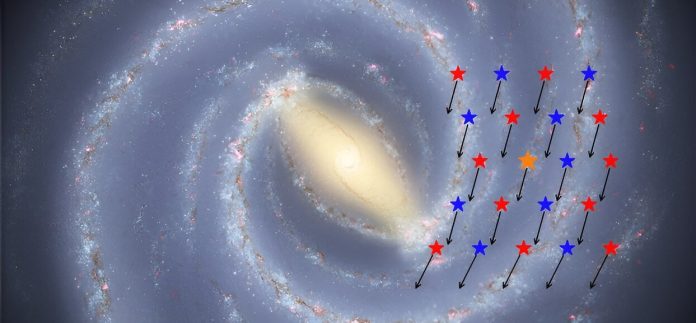
Scientists have made a surprising discovery about the evolution of our galaxy using data from the Gaia mission.
They found a large number of ancient stars with orbits similar to our sun’s, suggesting that the Milky Way’s thin disk began forming much earlier than previously believed—less than 1 billion years after the Big Bang.
The Milky Way has several components: a large halo, a central bulge and bar, a thick disk, and a thin disk.
Most stars, including our 4.6-billion-year-old sun, are located in the thin disk and rotate around the galactic center.
It was generally thought that the thin disk started forming around 8 to 10 billion years ago, but this new research suggests it began much earlier.
Understanding how the Milky Way formed is a major goal of galactic archaeology. To achieve this, scientists create detailed maps of the galaxy that show the ages, chemical compositions, and movements of stars.
These maps, known as chrono-chemo-kinematical maps, help piece together the history of our galaxy. Creating these maps is challenging because it requires large datasets of stars with accurately known ages.
One way to overcome this challenge is to study very old, metal-poor stars. These stars formed when the universe was mostly composed of hydrogen and helium, before many heavier elements were created.
Using data from the European Space Agency’s Gaia Mission, an international team led by astronomers from the Leibniz Institute for Astrophysics Potsdam (AIP) studied stars in the solar neighborhood, about 3,200 light years around the sun.
They discovered a surprising number of very old stars in thin disk orbits, with most of them being older than 10 billion years, and some even older than 13 billion years.
These ancient stars have a wide range of metal compositions. Some are very metal-poor, while others have twice the metal content of our much younger sun.
This indicates that a rapid metal enrichment took place in the early phase of the Milky Way’s evolution.
Samir Nepal from AIP, the lead author of the study, explains, “These ancient stars in the disk suggest that the formation of the Milky Way’s thin disk began much earlier than previously believed, by about 4–5 billion years.”
The study highlights that our galaxy had intense star formation in its early years, leading to fast metal enrichment in the inner regions and the formation of the disk.
This discovery aligns the Milky Way’s disk formation timeline with those of early galaxies observed by the James Webb Space Telescope (JWST) and the Atacama Large Millimeter Array (ALMA) Radio Telescope.
It suggests that cold disks can form and stabilize very early in the universe’s history, providing new insights into the evolution of galaxies.
Cristina Chiappini, a co-author of the study, adds, “Our study suggests that the thin disk of the Milky Way may have formed much earlier than we thought, and that its formation is strongly related to the early chemical enrichment of the innermost regions of our galaxy.”
The results were made possible by the third data release of the Gaia mission.
The team analyzed the stellar parameters of more than 800,000 stars using a new machine learning method that combines information from different data types to provide highly precise stellar parameters, including gravity, temperature, metal content, distances, kinematics, and the age of the stars.
In the future, similar machine learning techniques will be used to analyze millions of spectra collected by the 4MIDABLE-LR survey with the 4-meter Multi-Object Spectroscopic Telescope (4MOST), which will start operations in 2025.



